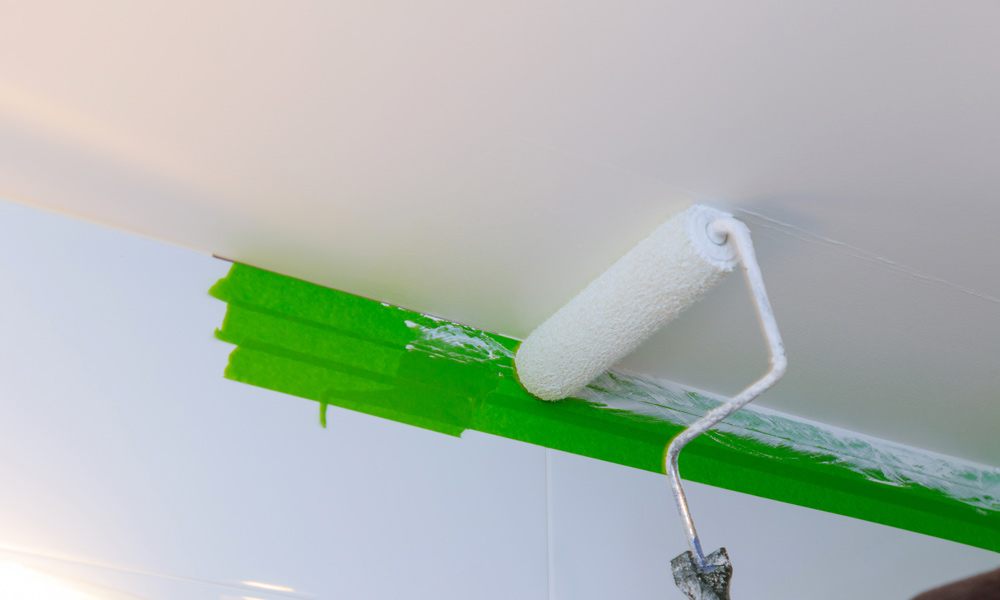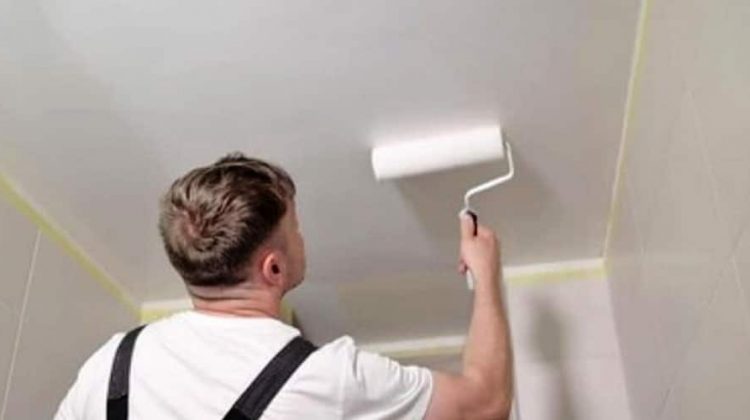Key Considerations for Bathroom Ceiling Paint

Choosing the right paint for your bathroom ceiling is crucial, as it needs to withstand the unique challenges of a humid and often steamy environment. Factors such as mildew resistance, stain resistance, and VOC content play a significant role in ensuring the longevity and safety of your paint job.
Mildew Resistance
Mildew is a common problem in bathrooms due to the presence of moisture. Mildew-resistant paint contains special additives that inhibit the growth of mold and mildew, preventing unsightly stains and potential health issues. Choosing a paint specifically formulated for bathrooms is essential for preventing mildew growth and maintaining a clean and healthy environment.
Stain Resistance
Bathroom ceilings are prone to stains from water splashes, soap residue, and other airborne particles. Stain-resistant paint features a durable finish that resists the penetration of stains, making it easier to clean and maintain. Look for paints with a high scrubbability rating, indicating their ability to withstand repeated cleaning without damaging the finish.
VOC Content
VOCs (Volatile Organic Compounds) are chemicals released from paints during the drying process. High VOC paints can emit strong odors and contribute to indoor air pollution, especially in enclosed spaces like bathrooms. Opt for low-VOC or zero-VOC paints to minimize harmful emissions and ensure a healthier environment for you and your family.
Paint Finishes
The finish of your bathroom ceiling paint can significantly impact its appearance and durability. Here’s a breakdown of common finishes and their suitability for bathroom ceilings:
Flat
Flat finishes provide a matte, non-reflective surface that hides imperfections well. They are often used in traditional bathrooms where a subtle and understated look is desired. However, flat finishes are more prone to staining and are less washable than other finishes.
Eggshell
Eggshell finishes offer a slightly sheen, providing a soft and elegant look while still hiding minor imperfections. They are more durable than flat finishes and are easier to clean, making them a popular choice for bathrooms.
Satin
Satin finishes have a smooth, slightly glossy sheen that reflects light subtly, creating a sophisticated and modern look. They are highly durable and washable, making them suitable for high-traffic bathrooms or those prone to moisture and splashes.
Semi-Gloss
Semi-gloss finishes offer a high sheen that reflects light significantly, creating a bright and clean appearance. They are extremely durable and highly washable, making them ideal for bathrooms with high moisture levels and frequent cleaning. However, they can highlight imperfections on the ceiling surface.
Color Choice
The color of your bathroom ceiling can significantly impact the overall ambiance of the space. Consider the following factors when choosing a color:
Spaciously
Light colors, such as white, cream, or pale blue, can create a sense of spaciousness and openness, especially in smaller bathrooms.
Tranquility
Soft, muted colors, such as pale green, lavender, or light gray, can evoke a sense of tranquility and relaxation.
Vibrancy
Bold, bright colors, such as yellow, orange, or teal, can add a touch of vibrancy and energy to the bathroom.
Application and Maintenance Tips: What Is The Best Paint For Bathroom Ceilings

Applying bathroom ceiling paint requires proper preparation and techniques to achieve a smooth, even finish that lasts.
Preparing the Bathroom Ceiling for Painting, What is the best paint for bathroom ceilings
Proper preparation is crucial for a successful paint job. This involves cleaning, patching, and sanding the ceiling surface.
- Clean the Ceiling: Start by removing any dirt, dust, cobwebs, or loose paint using a vacuum cleaner with a brush attachment or a damp cloth. Ensure the ceiling is completely dry before proceeding.
- Patch any Cracks or Holes: Use a patching compound or spackling paste to fill in any cracks, holes, or imperfections. Apply the compound with a putty knife, ensuring it’s level with the surrounding surface. Allow the compound to dry completely before sanding it smooth.
- Sand the Ceiling: Use fine-grit sandpaper to smooth out any rough patches or uneven surfaces. This helps create a smooth, even surface for the paint to adhere to.
Applying Bathroom Ceiling Paint
There are several methods for applying bathroom ceiling paint, each with its advantages and disadvantages.
- Roller: Rollers are the most common and efficient method for painting large areas like ceilings. Use a roller with a nap length appropriate for the texture of the ceiling. Apply thin, even coats of paint, working in sections and overlapping each stroke slightly.
- Brush: Brushes are ideal for painting corners, edges, and hard-to-reach areas. Use a high-quality angled brush with stiff bristles. Apply paint in thin, even strokes, working from the edges towards the center.
- Spray Gun: Spray guns provide a fast and even application, but they require more preparation and practice. Use a paint sprayer specifically designed for latex paint. Mask off surrounding areas and apply thin, even coats of paint, working in smooth, overlapping strokes.
Drying Time and Ventilation
Different types of bathroom ceiling paint have varying drying times. Proper ventilation is crucial during the drying process to prevent moisture buildup and ensure a smooth, even finish.
| Paint Type | Drying Time | Ventilation Tips |
|---|---|---|
| Latex Paint | 1-2 hours per coat | Open windows and doors for good air circulation. Use fans to expedite drying time. |
| Oil-Based Paint | 4-6 hours per coat | Ensure adequate ventilation with open windows and doors. Use fans for faster drying. |
| Epoxy Paint | 24-48 hours per coat | Provide ample ventilation during the drying process, as epoxy paints release strong fumes. |
What is the best paint for bathroom ceilings – Choosing the right paint for your bathroom ceiling can be tricky, especially when aiming for a specific aesthetic. If you’re going for a cozy, rustic charm, consider a light, airy color like a soft white or a pale cream. These colors can help create a sense of spaciousness, especially in a smaller bathroom.
For inspiration on achieving that farmhouse look, check out this guide to small farmhouse bathroom remodel. Remember, a well-chosen paint color can enhance the overall feel of your bathroom, so take your time and choose a shade that complements your style and the rest of your decor.
When choosing paint for your bathroom ceiling, consider a semi-gloss finish for easy cleaning and moisture resistance. This is especially important if your bathroom is compact and you’ve opted for a space-saving solution like installing a washer and dryer within the room.
The semi-gloss finish will help to reflect light, making the space feel larger and brighter, a key benefit when incorporating laundry appliances into a smaller bathroom.